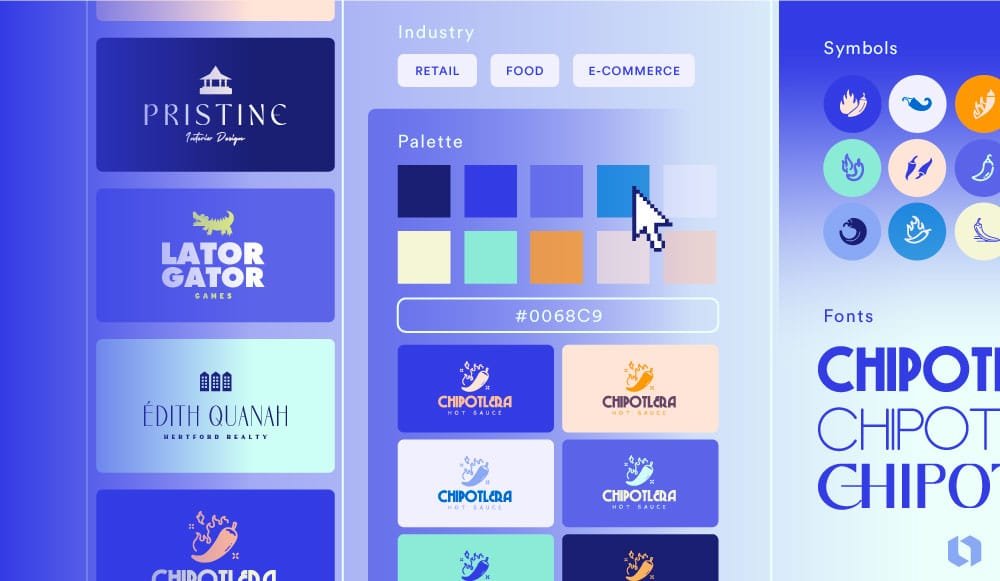A business will require the establishment of a powerful brand. Creating logos and interacting with the customers is one of the main aspects of developing that identity. A logo can be the initial picture of your brand in the mind of the customers. When properly designed, it does not just create recognition, but it also increases the involvement of their customers.
Here in this guide, we would guide you through all the process of how to design logos and reach out to customers, in easy instructions, easy examples and clear descriptions.
Table of Contents
Why Logos Matter in Customer Engagement
A logo does not only mean a picture, it is the face of your company. It depicts your business personality, mission and values. So here comes the reason why logos are very crucial:
- First impression: People notice your logo most of the time.
- Brand recognition: Catchy logos ensure that the customers recall your brand.
- Trust building: The logo creates confidence and trust with professionals.
- Marketing tool: It can be applied both on the internet and in physical surfaces in branding.
Step-by-Step: How to Design Logos and Engage with Customers
Let’s break the process down into actionable steps.
1. Understand Your Brand Identity
Before you jump into the design process, take time to understand your brand.
Ask yourself:
- What are your core values?
- What emotions do you want to evoke?
- Who is your target audience?
Tips:
- Create a brand mood board with colors, fonts, and images.
- List keywords that define your business.
2. Research Your Market and Competitors
To design logos and engage with customers, it’s crucial to study your competition.
| Feature | Your Brand | Competitor A | Competitor B |
| Logo Colors | Blue, White | Red, Black | Green, Yellow |
| Logo Style | Minimalist | Retro | Abstract |
| Target Audience | Gen Z, Startups | Small Businesses | Tech Companies |
Why it matters:
- Helps you avoid clichés.
- Allows you to stand out.
3. Choose the Right Logo Type
There are different types of logos. Each has its own benefits.
| Logo Type | Description | Example |
| Wordmark | Uses business name only | Google, Coca-Cola |
| Lettermark | Initials or abbreviations | IBM, CNN |
| Icon/Symbol | Uses symbols or images | Apple, Twitter |
| Combination | Mix of text and symbol | Adidas, Lacoste |
| Emblem | Text inside a symbol or icon | Starbucks, Harley-Davidson |
Choose based on:
- Business nature
- Brand personality
- Target audience preferences
4. Select Colors and Fonts Strategically
Colors and fonts carry emotional weight. Make sure they reflect your brand values.
Color Psychology Table:
| Color | Emotion/Meaning | Best For |
| Blue | Trust, Calm, Professional | Tech, Finance |
| Red | Passion, Energy | Food, Sports |
| Green | Nature, Health, Growth | Eco Brands, Wellness |
| Yellow | Optimism, Attention | Retail, Children |
| Black | Luxury, Elegance | Fashion, High-End Products |
Font Tips:
- Use 1-2 font families.
- Sans-serif fonts = modern, clean.
- Serif fonts = traditional, formal.
5. Design the Logo Using Tools or Hire a Designer
You can either use DIY tools or work with professionals.
DIY Tools:
- Adobe
- Canva
- Looka
- Wix Logo Maker
- LogoMakr
Hiring a Professional:
| Option | Pros | Cons |
| Freelancer | Custom design, affordable | Varies in quality |
| Design Agency | High quality, full branding | Expensive |
| Contest Platforms | Multiple choices, fast | Less personal |
6. Test the Logo with Your Audience
Don’t assume your logo works—ask your customers.
How to test:
- Share logo options on social media.
- Use surveys and polls.
- A/B test across platforms.
7. Use the Logo Across All Customer Touchpoints
To fully design logos and engage with customers, make your logo visible where your customers are.
Where to use your logo:
- Website & Blog
- Social Media Profiles
- Email Signatures
- Business Cards
- Product Packaging
- Advertisements
8. Engage Customers with Consistent Branding
A good logo opens the door, but engagement builds the relationship.
Tips for engaging customers:
- Be consistent in visual style.
- Share your brand story behind the logo.
- Encourage user-generated content with your logo.
- Respond to customer feedback about branding.
Common Mistakes to Avoid
- Using too many colors or fonts.
- Copying other brands.
- Ignoring mobile responsiveness.
- Skipping customer feedback.
- Not updating the logo when the brand evolves.
Frequently Asked Questions (FAQs)
Q1: Why is it necessary to make a distinctive logo?
Your brand needs something distinctive like a unique logo to appear in the market and make sure that people do not mistake you with your rivals.
Q2: Is it possible that I get a free logo designed?
Yes, there are lots of free tools such as Canva, however, to have professional stuff, you may want to hire a designer.
Q3: What role does a logo play to reach the customers?
The good logo designs will instill confidence, form a memorable experience and underscore your brand throughout the touchpoints.
Q4: What is the frequency in which I should change my logo?
In case your brand changes greatly, you should think about changing it after 5-10 years.
Q5: How can I obtain feedback on my logo?
Find the truth by utilizing social media, email surveys or customer interviews.
Conclusion
In order to come up with effective logo designs and customer interaction, creativity, strategy, and understanding customers are combinations that are required. A logo is not a graphic, but it is the name of your brand. When properly achieved, it not only defines you but it establishes a communication and a trust window with people to whom you are communicating.

